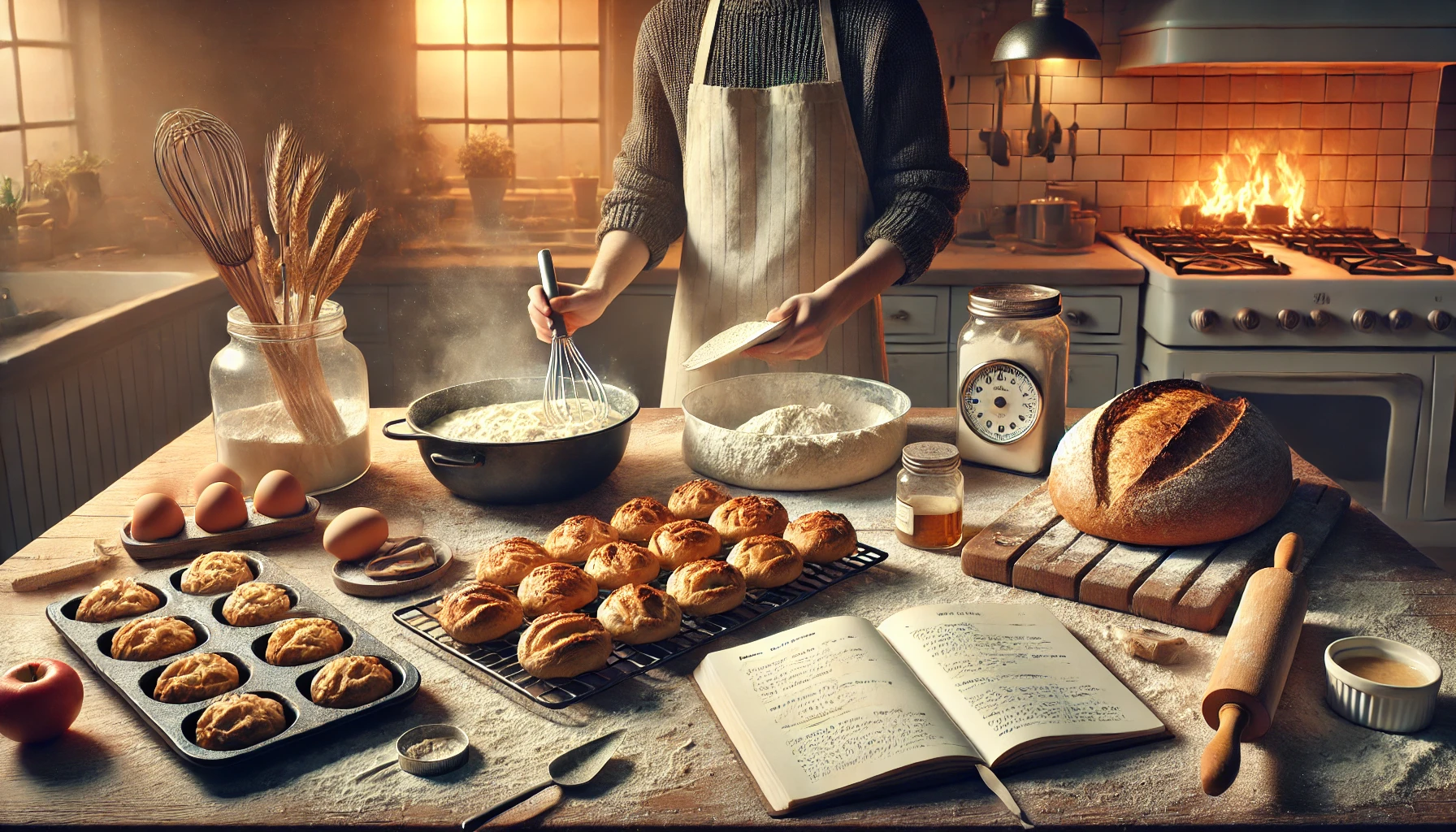Baking bread at home is a wonderfully rewarding hobby, but let’s be honest — most beginners run into challenges. Flat loaves, dense crumbs, bland flavor… we’ve all been there. The good news? These mistakes are totally fixable — and often expected when you’re just getting started.
Let’s break down the 10 most common mistakes new home bakers make and, more importantly, how to avoid them so your next loaf comes out beautiful and delicious.
1. Using the Wrong Type of Flour
Not all flours behave the same way. Bread flour has more protein than all-purpose flour, which helps create stronger gluten and a chewier texture. Many beginners grab the wrong type and end up with flat, dense bread.
How to avoid it:
Use bread flour for most recipes that call for high-rise loaves. If using all-purpose flour, expect a slightly softer and less structured result.
2. Not Measuring Ingredients Accurately
Baking is a science, and bread is no exception. Measuring flour by volume (cups) instead of weight (grams) can lead to too much or too little flour, making your dough either too dry or too wet.
How to avoid it:
Use a kitchen scale to measure your ingredients. It’s more precise and ensures consistency.
3. Killing the Yeast With Hot Water
Yeast is alive and delicate. Using water that’s too hot will kill it, meaning your dough won’t rise at all. On the flip side, cold water will slow fermentation too much.
How to avoid it:
Use lukewarm water (around 100–110°F or 38–43°C). Test with your finger — it should feel comfortably warm, not hot.
4. Not Kneading the Dough Enough (Or Overkneading)
Kneading helps develop the gluten, giving your bread structure and chew. If you don’t knead enough, your bread will be flat and crumbly. Overkneading, especially with machines, can break the gluten strands and make the dough tough.
How to avoid it:
Learn to feel when dough is ready. It should be smooth and elastic, and spring back when you press it lightly.
5. Skipping the First Rise (Bulk Fermentation)
Some beginners rush the process, skipping the first rise or not letting the dough rise long enough. This results in dense, underdeveloped bread.
How to avoid it:
Always give your dough enough time to double in size during the first rise. This can take 1–2 hours, depending on the room temperature.
6. Letting the Dough Overproof
On the other hand, letting dough sit too long during proofing (rising) can also ruin it. Overproofed dough collapses and results in a flat loaf.
How to avoid it:
Check your dough periodically. If it springs back slowly when poked, it’s ready. If it deflates easily, it’s gone too far.
7. Not Preheating the Oven Properly
Bread needs a blast of heat in the beginning to rise properly. If your oven isn’t fully preheated, the bread may not expand well, and the crust may not form correctly.
How to avoid it:
Always preheat your oven at least 30 minutes before baking, especially if you’re using a Dutch oven or baking stone.
8. Skipping Steam During Baking
Steam helps create that beautiful, shiny, crispy crust we all love. Without steam, the crust forms too early, restricting the bread’s rise.
How to avoid it:
Add steam in the first 10 minutes of baking by placing a pan of hot water in the oven or spraying water on the oven walls right after loading the dough.
9. Cutting Into Bread Too Soon After Baking
We get it — fresh bread is tempting. But cutting into hot bread lets out steam, making the interior gummy and ruining the texture.
How to avoid it:
Let your bread cool completely on a wire rack — usually at least 1 hour — before slicing.
10. Giving Up After One Bad Loaf
Perhaps the biggest mistake is expecting perfection right away. Bread baking is a craft that improves with time, attention, and practice.
How to avoid it:
View each loaf as a learning experience. Take notes, adjust, and celebrate the progress — not just the outcome.
Making Better Bread Starts With Awareness
Avoiding these 10 common mistakes can drastically improve your baking results. But remember: the real secret ingredient in great bread is consistency. The more you bake, the more natural everything becomes — from reading dough texture to shaping loaves like a pro.
So don’t be discouraged by early failures. Every baker has burnt a loaf, overproofed dough, or baked a brick. What matters most is that you keep learning, experimenting, and having fun.
Your next great loaf is just one batch of dough away.
